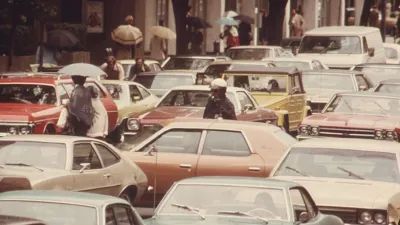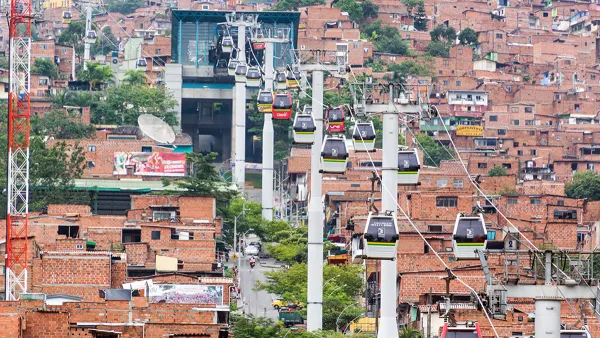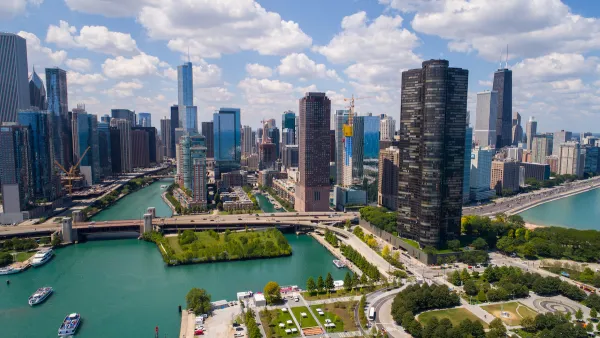For decades, researchers have hunted for an explanation for why big cities have been more prone to violent crime than small ones. A new hypothesis may offer a surprising answer, and prove that big cities aren't inherently much more dangerous.

Researchers have offered several potential explanations for historically higher rates of violent crime in big cities: from the idea that there's more valuable stuff to steal in big cities to the rise of the crack epidemic. Even if other potential reasons strike you, you probably haven't considered a new persuasive hypothesis: exposure to gasoline lead. In an article for Mother Jones and in a follow-up blog piece, Kevin Drum examines the connection between lead exposure and crime.
"In a nutshell, the lead-crime hypothesis is simple: exposure to gasoline lead in small children produces heightened aggressive tendencies. When an entire generation of children was exposed to lead in the 40s, 50s, and 60s, thanks to the boom in auto sales after World War II, it led to a huge rise in violent crime when the children grew up in the 60s, 70s, and 80s. The more lead they were exposed to, the more crime you got."
"So where did we see the most exposure to gasoline lead? Answer: in places with the densest concentration of automobiles. And that's in the inner core of big cities. In the early 60s, big cities had double the ambient air lead levels of mid-size cities, which in turn had air lead levels 40 percent higher than small cities. (Nevin, p. 316.) So if lead exposure produces a rise in crime, you'd expect to see a bigger rise in big cities than in small ones. Over time, big cities would become increasingly more dangerous than small ones."
"Likewise, when lead was removed from gasoline, and children started to grow up normally, you'd expect to see a bigger crime decrease in big cities. Over time, crime rates would start to converge."
"And that's exactly what we see in the data."
"Only gasoline lead," concludes Drum in his article, "with its dramatic rise and fall following World War II, can explain the equally dramatic rise and fall in violent crime."
FULL STORY: Are Big Cities More Dangerous Than Small Ones?

Analysis: Cybertruck Fatality Rate Far Exceeds That of Ford Pinto
The Tesla Cybertruck was recalled seven times last year.

National Parks Layoffs Will Cause Communities to Lose Billions
Thousands of essential park workers were laid off this week, just before the busy spring break season.

Retro-silient?: America’s First “Eco-burb,” The Woodlands Turns 50
A master-planned community north of Houston offers lessons on green infrastructure and resilient design, but falls short of its founder’s lofty affordability and walkability goals.

Test News Post 1
This is a summary

Analysis: Cybertruck Fatality Rate Far Exceeds That of Ford Pinto
The Tesla Cybertruck was recalled seven times last year.

Test News Headline 46
Test for the image on the front page.
Urban Design for Planners 1: Software Tools
This six-course series explores essential urban design concepts using open source software and equips planners with the tools they need to participate fully in the urban design process.
Planning for Universal Design
Learn the tools for implementing Universal Design in planning regulations.
EMC Planning Group, Inc.
Planetizen
Planetizen
Mpact (formerly Rail~Volution)
Great Falls Development Authority, Inc.
HUDs Office of Policy Development and Research
NYU Wagner Graduate School of Public Service



























